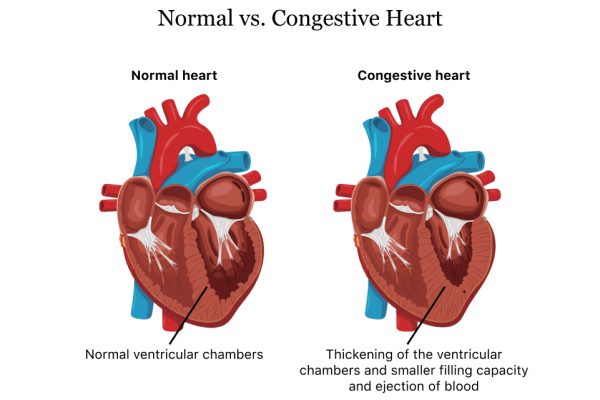Revision hip arthroplasty surgery (now and then referred to by its medical term revision hip replacement surgery) is done to address failures or complications following previous hip replacement surgeries. Although most replacement procedures are successful, some individuals may sometimes experience issues related to their new joints, such as loosening of implants, dislocation, and infection that leads to wear-and-tear wear over time.
Hip revision surgeries aim to address these problems by improving mobility, relieving pain relief, and offering patients an overall higher standard of living. They typically involve extracting original elements that make up a hip joint from its original location before replacing them with fresh replacements – though this procedure could prove more complex as careful planning, experienced surgeons, and advanced techniques may be required for successful results.
In this article, we’ll take an in-depth look at hip replacement surgery: its purpose, procedure, and benefits, as well as recovery risks, candidacy requirements, and rate of success – so patients can make educated choices regarding medical treatments while considering potential pain relief solutions. With such knowledge at their fingertips, informed decisions regarding patient medical treatments and lifestyle decisions may become possible.
Table of Contents
Gaining Knowledge About Hip Revision Surgery
Hip revision surgery aims to correct errors made in previous hip replacement operations by replacing or removing key components like an acetabular cup, femoral stem, or any malfunctioning parts like cracked stems. Revision procedures aim to alleviate pain while increasing functionality while simultaneously improving the quality of life for patients undergoing revision procedures.
Revision surgery on your orthopedic hip may become necessary due to various causes, including loosening of an implant and dislocation, infection or wear and tear on an implant fracture, as well as instability. All these issues can contribute to pain that restricts mobility or limits it altogether; revision surgery seeks to address them efficiently in order to provide lasting relief from them all.
Reasons Behind Hip Revision Surgery
Implant Loosening
One of the primary drivers behind hip revision surgery is loose implants. Over time, the connection between bone and implant may weaken further due to factors like poor initial implant fixation or osteolysis (bone loss) as well as wear. A hip revision procedure involves extracting damaged parts before replacing them with longer-lived ones to increase security and prolong joint movement.
Infection: An infection could also require revision surgery of hip implants, although its incidence is relatively uncommon. When diseases strike, they can result in swelling, pain, and fever – sometimes lasting months before seeking medical assistance, although antibiotics can often help alleviate acute conditions. If chronic illnesses persist, then surgery will likely become necessary: revision procedures involve extracting affected components and thoroughly cleaning out affected regions before replacing them with sterilized replacement components in an operating theatre environment.
Dislocation: Dislocation can result from injuries, instability, and incorrect component alignment errors, causing dislocated ball bones from their sockets causing dislocated hip joints that break free and protrude through their cups, potentially leading to future dislocations that will require revision surgery to address the root cause of dislocations and prevent further dislocations from recurring. Dislocations may be treated by manipulation and reduction; for more severe dislocations, revision surgery may be required in order to address root cause correction and avoid future dislocation recurrences; it also seeks to fix sources and potentially correct future dislocations by correcting them at source; thus, helping avoid repeated instances and potential future dislocations from occurring again in future.
Implant Wear and Tear
Over time, hip implant components may wear down due to physical exercise, poor design of the implant, or other factors unique to each patient’s circumstances. Revision surgery on hips involves replacing worn-out parts with ones that provide more excellent durability and longer lives.
Procedure for Hip Revision Surgery
Preoperative Assessment
Prior to undertaking hip replacement surgery, individuals must complete an exhaustive preoperative exam in order to assess their general health and determine eligibility accurately. This treatment could involve reviewing medical history documents, performing physical exams and blood testing, imaging studies such as X-rays or MRI scans, and consulting various healthcare professionals such as orthopedic surgeons, anesthesiologists, or physical therapists for analysis and consultation purposes. See Texas Joint Institute to read more.
A surgeon will evaluate levels of pain, functional limitations, range-of-motion issues, as well as goals or concerns the individual has regarding hip replacement surgery. An assessment will also be made regarding any prior procedures performed and their causes (failures/complications); after conducting such analysis, an individualized plan encompassing surgical procedures to be followed, implant selection procedures, and post-op care options that might be available to them will then be created.
Surgical Procedure:
Repairing hip replacement surgeries are much more intricate and specialized than their initial counterparts, necessitating highly experienced revision surgeons to carry them out successfully. Procedures will depend upon each situation; essential methods might include:
Anesthesia: During this process, generally, an anesthetic will usually be administered to keep the patient unconscious and pain-free during its entirety. Regional anesthesia may also be employed where lower body nerve endings are anesthetized while still conscious.
Incision: The surgeon will make an incision across the hip, uncovering both surgical scar tissue left from previous removal procedures as well as any tissue beneath. Its size and location depend on both personal preferences as well as any case in question.
Removing Components: For safe uninstallation of original hip implants, surgeons should employ specialized tools and techniques in extracting all original components, such as the acetabular cup, femoral stem, and malfunctioning or damaged pieces from their initial configuration – including any malfunctioning articles that need pulling without further damaging bone surrounding tissues or soft tissues.
Bone Preparation: After all the components that once used have been eliminated, a surgeon will prepare bone surfaces in advance for implant placement by cleaning and clearing away adhesive or cement residue from previous uses, as well as correcting any bone imperfections or deficiencies present.
Implantation: The surgeon will insert new components, such as new designs of an acetabular cup or femoral stem as well as any necessary specialty pieces based on patient requirements, into your bones using either press-fit or bone cement, depending on what best meets each implant design and surgeon preference.
Closure: Once surgeons have implanted new elements, they will carefully close their incision using staples or sutures and cover it with sterile dressings or even place drains to drain away blood or fluid accumulation at its site.
Postoperative Care: After surgery, patients will be transported to a recovery room, where medical teams will closely observe them. Pain control techniques, including medications or regional anesthesia, may be implemented to ensure patient safety; physical therapy and rehabilitation also play a crucial role in postoperative care procedures.
Advantages of Hip Revision Surgery
Revision hip replacement surgery offers numerous advantages to individuals experiencing complications or failure with their initial procedure, including increased comfort, mobility improvements, and functional enhancement. Overall living quality also improves significantly through revision surgery.
Reducing Discomfort: Hip revision surgery is performed to relieve discomfort caused by failures or complications with an initial hip implant, including loosening, infection, or wear and tear issues caused by regular use. Revision can significantly decrease pain, allowing individuals to return to fully participating in daily activities without restrictions whatsoever.
Improved Functionality and Mobility: Complex hip replacement procedures may leave long-lasting consequences on an individual’s mobility and functionality. Yet, revision surgery aims to restore these functions by replacing malfunctioning parts with ones offering greater mobility and stability – this allows patients to perform everyday chores more comfortably, engage in physical activities more efficiently, and lead an active lifestyle more confidently.
Rehabilitation and Recovery Services
After hip replacement surgery, rehabilitation and healing should take a top priority to maximize results and restore full functionality. While recovery times and protocols vary according to each person’s unique circumstances, specific guidelines and milestones should be expected along the road toward wellness.
Potential Complications and Risks Associated with Surgery
As with any surgical procedure, hip revision surgery carries risks and complications; however, its overall success rate is excellent, and many patients see improvement both physically and in terms of pain relief postoperatively.
Infection: Any surgery may lead to disease; for example, hip replacement surgeries often result in conditions around an implant that cause swelling, redness, and fever – symptoms may initially respond well with antibiotic treatment, but prolonged or persistent symptoms could require surgical removal to resolve and dispose of any potentially infected components and effectively treat an infection.
Femoral Dislocation: Femoral dislocation occurs when part of the femur bone dislocates from its attachment in an acetabular cup during revision hip surgery. However, the risk of dislocation may be low, but it should still be considered a potential complication. A variety of factors, including inadequate alignment, instability, or trauma, could increase its likelihood; healthcare professionals provide guidelines and tips that reduce dislocation risk during recovery by not moving or changing positions during this phase.
Nerve Damage: Revision hip surgery carries with it many risks for nerves near its surgical site and is vulnerable to being damaged during invasive procedures, making nerve trauma all too likely. While severe nerve injuries are unlikely, even minor nerve trauma could result in sensory impairment and reduced functionality; healthcare providers thus take measures to limit risks during revision hip surgery while tracking neurologic recovery post-recovery.
Prior to any medical procedure or follow-up appointment, patients need to communicate any concerns or symptoms to their healthcare provider as soon as they arise. By adhering to postoperative care instructions and attending every scheduled follow-up appointment, patients can lower complications while expediting the recovery process and ensuring an efficient recovery journey.
Hip revision surgery gives patients who have experienced complications or failed hip replacement procedures the chance to live an enjoyable, pain-free existence once more. By extracting defective components from implants that make up these revisions and replacing them, surgery could bring significant relief in terms of pain reduction, increased performance, and an overall higher standard of living.





